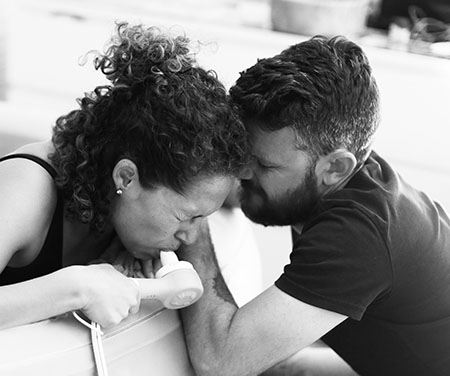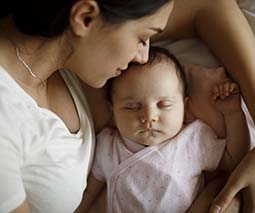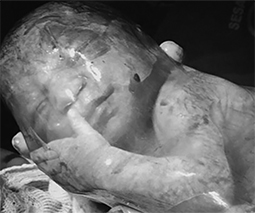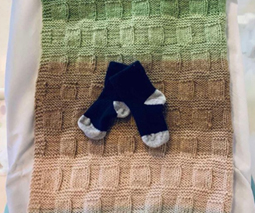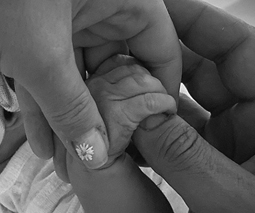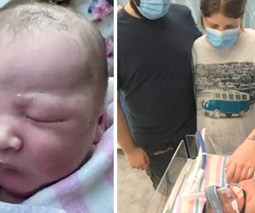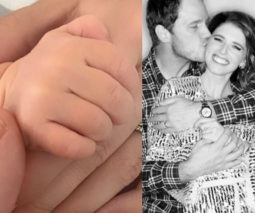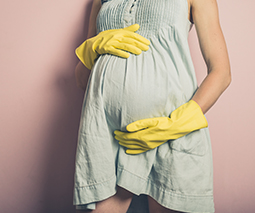Suffering in silence: Why we need to talk about birth injuries and birth trauma

Amy Dawes is the founder of the Australasian Birth Trauma Association and she says that, like many women, the difficulty of birth caught her entirely by surprise.
Despite preparing for a drama-free vaginal birth, Amy went on to have a forceps delivery which resulted in a serious perineal tear.
Wheeled out of the hospital in a wheelchair five days postpartum, Amy assumed that her experience was the norm and this was simply what childbirth entailed. It was only 16 months after her baby was born that the severity of her birth injuries really began to hit home.
“I went on to prolapse,” Amy explained. “We have pelvic floor muscle that holds our bladder, bowel and uterus in place. If that muscle is damaged or weakened, those organs can sit where they’re not supposed to.”
Listen to Amy on Feed Play Love
Coming to terms with birth
Realising something wasn’t quite right with her, Amy made an appointment with a pelvic physiotherapist.
In the early days, her condition was distressing because she was dealing with faecal incontinence due to the injuries she had suffered from having her bub.
Feeling she was the only one to suffer this sort of birth consequence, Amy began looking for information online and this research led her to midwife, Elizabeth Skinner.
The pair set up the Australasian Birth Trauma Association and now inform and support women on this rarely talked about side of birth.
An isolating experience
Amy says that once women give birth, the focus naturally shifts to the baby. But her birth experience should have raised red flags because one in two women will sustain significant pelvic floor muscle trauma if they have a forceps delivery, Amy explains.
Amy hopes we will talk more about the toll birth can take and that health professionals will take postpartum women’s wellbeing more into consideration – and ask questions about how they are recovering from their birth.
“Lots of women suffer in silence,” she explains. “That’s why I speak out so openly about it.”
More awareness of birth trauma is needed
That said, very often women do speak to their doctor or midwife about their concerns and still don’t get the help they need – or end up being misinformed.
“There’s a lack of awareness about pelvic muscle damage”, Amy says, with doctors even advising women that conditions such as ‘fistulas‘ – where there is no remaining skin between the anus and the vagina – don’t occur in Australia.
In fact, the Australasian Birth Trauma Association see approximately one woman a month with a fistula and Amy notes that not only does this lead to terrible incontinence issues, but takes a mental health toll too.

Any birth can be traumatic
Of course, not all birth trauma is at the fistula end of the scale. In fact, Amy explains that this sort of trauma runs the gamut and is “in the eye of the beholder”.
“For one person what could look like a really straightforward birth can actually cause great distress to another person,” she continued. “So we support women that have had a range of complications, and that could be an emergency caesarean or just feeling completely disempowered by their medical professionals. Baby loss … there’s a range of facets that fall into birth trauma.”
So how do you know if your birth has lead to issues that need further attention or treatment? Go with your gut and be careful not to ignore symptoms – both physical and mental – that are affecting your day-to-day quality of life.
“If you feel like you’ve been hit by a bus after giving birth and you are struggling to walk for a few weeks afterwards, that’s usually quite a significant indication that something is not right.” Amy also notes this is when women should take themselves off to a pelvic physiotherapist for further investigation. Referrals to a pelvic physiotherapist are available through any GP.
Women can also get in touch with the Australasian Birth Trauma Association to access peer support and find information about professionals who can provide treatment for injuries sustained during childbirth.
